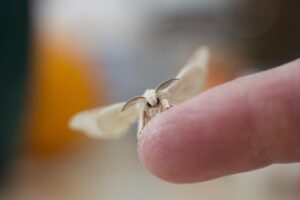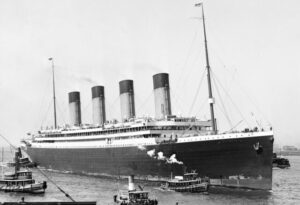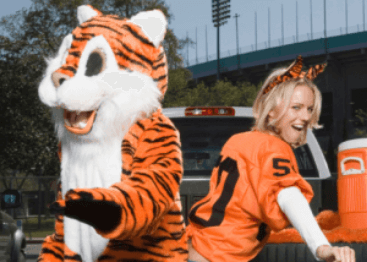10 Bone-Chilling Skeleton Facts That Will Change What You Know
It’s an unsettling thought, isn’t it? You go about your day, but lurking beneath your skin is a whole structure made of bones—your very own skeleton. It’s like being stalked by your own internal vampire, except it’s not thirsting for blood. Instead, it’s silently supporting, protecting, and shaping your body.
You might not give it much thought as you walk, run, or sit, but your skeleton is at the center of every movement and every little adjustment your body makes. It’s literally the frame that holds everything together. And yet, many of us hardly give it a second glance—until something goes wrong, like a sprained ankle or a broken bone, and then suddenly, the skeleton demands your attention.
But what if we told you that skeletons, in general, have some seriously creepy and fascinating facts that might make you view your own bone structure in a whole new light? There’s way more going on under your skin than you might think, and not all of it is as comforting as you’d hope.
Your skeleton is not just a passive structure. It’s active, constantly evolving, and full of surprising quirks. Intrigued? Let’s dive into some skeletons secrets that could make you want to squirm!
10. Your Skeleton Undergoes a Complete Overhaul Every 10 Years
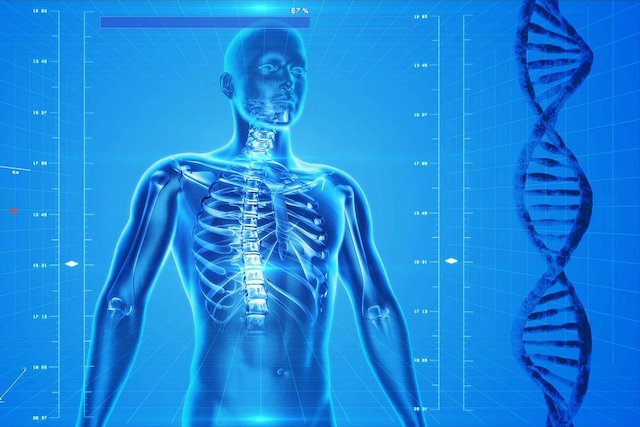
You might think of your body as something permanent—after all, it’s you, and you can’t really imagine being anywhere without it. But here’s an interesting twist: technically, your body is constantly in the process of rebuilding itself. From the cells to the atoms, what makes you “you” today is vastly different from what you were a year ago. And your skeleton? It’s no exception.
While your bones might seem like unchanging, solid structures, they’re actually going through a fascinating transformation all the time. The cells that make up your bones are continually being replaced, much like your skin or organs. In fact, over the span of about a decade, your entire skeleton will have been completely renewed with fresh cells.
The bones in your body hit their peak mass during your twenties, and from there, a process called remodeling kicks in. This means that your bones undergo continuous cycles of breakdown and renewal, essentially swapping old cells for new ones. It’s like your skeleton is the Ship of Theseus—ever-changing, yet still you.
Every time this remodeling happens, it ensures your bones stay strong and healthy. But it also means that, at any given point, your skeleton is always in flux, constantly renewing itself, even though we tend to think of our bones as permanent fixtures in our bodies.
Want to know more fascinating facts about how our bodies work? Check out more incredible body facts and science wonders.
9. Real Skeletons Have Appeared in Many Iconic Movies
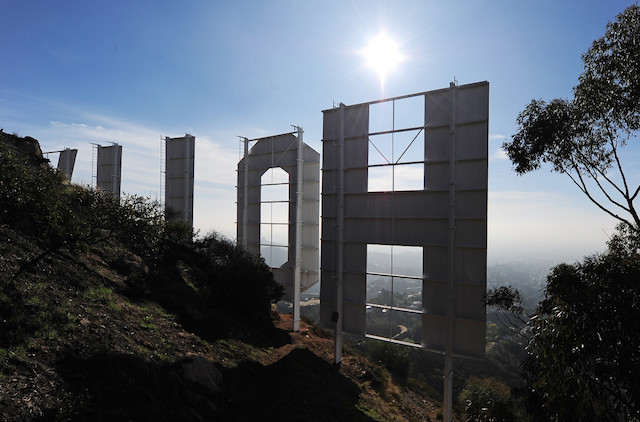
In daily life, chances are, you’ll never come across an actual human skeleton. Most of us rarely, if ever, see a dead body, and when we do, it’s usually a loved one at a funeral shortly after their passing. The average person simply doesn’t have much reason or opportunity to witness human skeletal remains up close.
However, even if you haven’t seen a skeleton in person, there’s a good chance you’ve seen one on screen—and not just in horror flicks. Movies from all genres have used real human skeletons as props, and the surprising thing is, these weren’t always artificial creations crafted by special effects teams. For many years, filmmakers actually used real human skeletons as movie props.
Iconic films like the original Poltergeist, The Good, The Bad, and The Ugly, and The Rocky Horror Picture Show all featured real human skeletons. At the time, most viewers weren’t aware, but these skeletons were indeed authentic. Even the Pirates of the Caribbean ride at Disneyland famously included real human skeletons as part of the set.
Take Poltergeist, for example. In one of the film’s most chilling scenes, real skeletons were used in a pool scene. Initially, the cast and crew assumed they were props, but it turned out that it was far cheaper to purchase actual human skeletons from medical supply companies than to create plastic replicas.
In The Good, The Bad, and The Ugly, a chilling moment features a skeleton discovered in a coffin—another real set of human remains. This particular skeleton belonged to an actress who had made a unique request: to continue acting even after death. It’s just one of many fascinating stories behind the use of real skeletons in films.
8. The Mysterious Lake in the Himalayas Filled with Skeletons
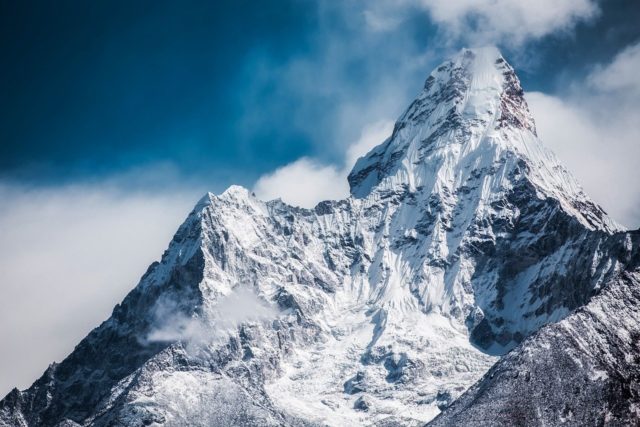
Imagine a lake, serene and untouched, yet harboring a dark secret — hundreds of skeletons lie within its icy depths. This isn’t the stuff of fiction; it’s a chilling reality in the Himalayan mountains.
Back in 1942, a shocking discovery was made. Nestled high in the mountains, over 300 to 800 corpses were found in and around this frozen lake, isolated by miles from the nearest town and sitting at an astonishing altitude of 5,000 meters above sea level. The sight of so many remains in one place was both haunting and perplexing.
For decades, the prevailing theory was that these were the remains of pilgrims who had unfortunately been caught in a deadly storm. The absence of weapons and any signs of struggle seemed to support this hypothesis. However, a groundbreaking genetic analysis in 2019 turned this theory on its head.
The results revealed that the skeletons didn’t belong to a single group of people. Instead, they were the remains of three distinct groups, each from different time periods and geographical origins far beyond the Himalayas. This revelation added a new layer of mystery to an already enigmatic case. If they weren’t pilgrims, then who were these individuals, and what brought them to this remote and hostile location?
The lake remains shrouded in mystery, and every new discovery seems to deepen the enigma rather than solve it. It’s a chilling reminder that nature still holds secrets that are yet to be uncovered, and sometimes, these secrets are more unsettling than we could ever imagine.
Dive into more unbelievable stories and fascinating mysteries on our website, where we share content that’s not only interesting but also useful, sparking your curiosity and imagination.
7. No Skeletons Remain from the Titanic’s Victims
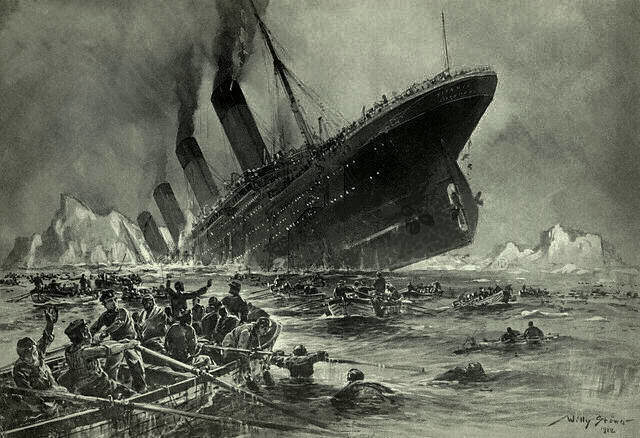
The story of the Titanic continues to captivate people all over the world, largely due to its tragic sinking and the legendary film by James Cameron. From the wreckage’s discovery to the unfortunate 2023 submarine disaster, the mystery surrounding the Titanic has never faded. But there’s one crucial detail about the shipwreck that many might not know: there are no skeletons left to recover.
Despite the fascination with the Titanic’s wreck, nothing remains of the passengers who perished that night—not even their bones. Over time, the skeletons of the victims have long since dissolved, lost to the depths of the ocean.
This happens because, below a certain depth—3,000 feet—there’s a level in the ocean known as the calcium carbonate compensation depth. Below this point, bones begin to break down and dissolve due to the high pressure and the water’s chemical composition. So, even though the Titanic wreck lies at a depth of about 12,500 feet, the remains of its victims couldn’t have survived the harsh environment for over a century.
Even if some bodies had been trapped in parts of the ship with oxygenated water, it’s highly unlikely that any recognizable remains could ever be recovered. Over time, nature has erased nearly every trace of the passengers who tragically lost their lives.
6. Over Half a Million Native American Skeletons Are Held in Museums
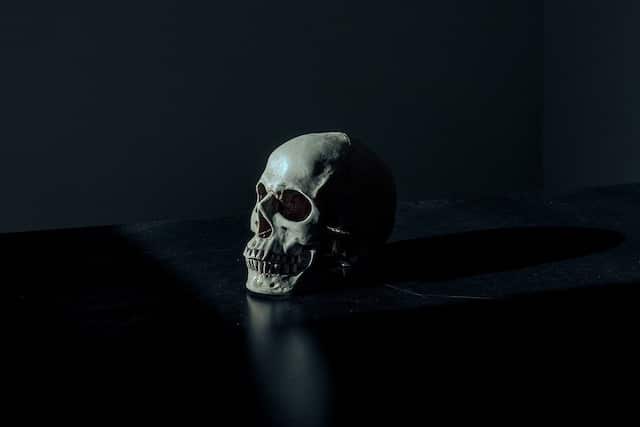
If you ever visit a natural history museum in the United States, you might come across the skeletal remains of humans. These could be mummies, ancient humans discovered in caves, or even those found preserved in bogs—often offering glimpses into the distant past.
While these remains can seem fascinating or even educational on an individual basis, taking a step back reveals a much darker reality when it comes to the skeletons of Native Americans. In fact, most museums across the country house the remains of these Indigenous people, and when you start to count the numbers, the total becomes staggering.
The number of Native American skeletons stored in museums is estimated to be over half a million. That’s not just a few; it’s an incredibly large number. For perspective, imagine if the remains of an entire city—like Sacramento, with its population of about 528,000—were put on display for the public to view.
This practice brings up serious ethical concerns and questions about cultural respect. When we think about what it would feel like if someone displayed the bodies of your ancestors or loved ones, it’s not hard to understand the pain and discomfort that many Native American communities feel about these remains being kept in museums for public viewing or study.
5. The Bizarre Practice of Covering Skeletons in Gold and Jewels in Europe
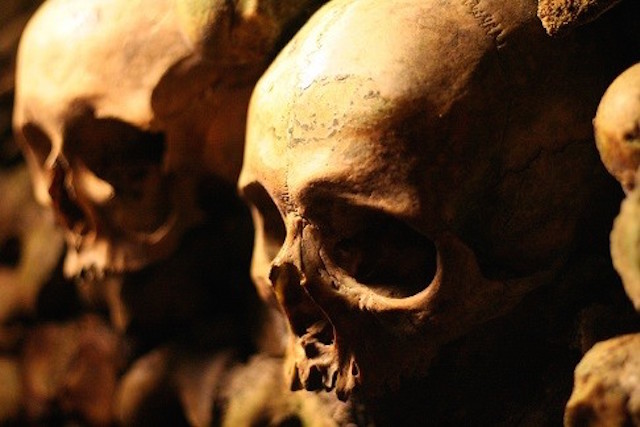
In the rich tapestry of religious practices, the Catholic Church stands out in certain aspects. One of the things that sets it apart from many other Christian churches is its profound focus on saints. While many Christians typically direct their prayers solely to God, Catholics have a unique approach. They offer prayers to specific saints, believing that these saints can look after them or offer guidance related to particular aspects of life. For example, Saint Amand is regarded as the saint of bartenders, and Saint Christopher is one of the saints associated with travelers.
However, within some Catholic communities in specific regions, there emerged a rather unusual and macabre practice – the creation of catacomb saints. Now, what exactly are catacomb saints? Well, these are essentially skeletons that have been meticulously adorned with gold and jewels.
These gaudily decorated skeletons were placed in small churches. They were revered as local protectors, a kind of supernatural guardian for the local congregation. Picture this: for years on end, these golden-crested skeletons with their jewel-encrusted smiles would preside over the church, watching over the devotees, as if silently offering their protection.
It’s quite fascinating to note that many of these skeletons, which can still be found in parts of Northern Europe today, were originally Roman martyrs. And incredibly, they are still viewable in their current state even in modern times. If you’re interested in exploring more strange religious practices or historical oddities, be sure to check out more content on our website. There, you’ll find a plethora of information that’s both entertaining and educational, satisfying your thirst for knowledge about the odd and unusual aspects of history and religion.
4. The Sedlec Ossuary: A Church Adorned with Over 40,000 Skeletons
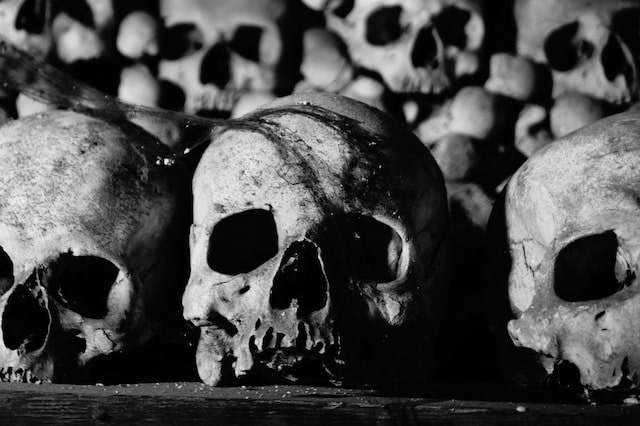
If you’re not fascinated by golden skeletons, perhaps the Sedlec Ossuary in the Czech Republic will catch your interest. This eerie church, dating back to the 13th century, is most famous for being decorated with the skeletal remains of between 40,000 and 70,000 people.
But these aren’t just any scattered bones—the skeletons have been intricately arranged into macabre works of art. Ribs are carefully positioned next to fingers, guiding your gaze to ornate crests crafted from pelvic bones and skulls. Throughout the church, you’ll spot stunning (and unsettling) creations, such as chandeliers, candelabras, and chalices—all made from the remains of thousands of people.
The origins of this unusual decoration are tied to an intriguing legend. The abbot of a nearby monastery once went on a pilgrimage to the Holy Land, returning with a small handful of soil from the very place where Jesus had died. This holy soil sparked a strong desire among locals to be buried there, leading to the filling of over 30,000 graves around the monastery. But with no more room left, the bodies were eventually repurposed into these grim yet artistic decorations over time.
3. India Once Dominated the Skeleton Black Market

Earlier, we mentioned how real skeletons were used in films over the years, which raises the question: where do these skeletons come from? For the most part, skeletons were sold for medical study and research, often ending up in classrooms and laboratories.
If you’ve ever seen a skeleton in a medical school, chances are it was used to help students understand human anatomy. While many of these skeletons today are made from plastic or other materials, there was a time when real human skeletons were used for these purposes. So, where did these skeletons come from?
For many years, India was at the heart of a thriving black market in skeletons. Most of the skeletons used in medical teaching around the world came from this region, particularly around Calcutta. These weren’t donations from people who knew what was happening; rather, they were stolen from graves.
The trade in skeletons dates back to colonial times when British doctors paid grave robbers for fresh bodies. This practice continued for nearly 200 years, with graveyards being looted and bodies sold to meet the high demand. In certain parts of Calcutta, entire graveyards were left empty, a grim reminder of the trade that once flourished.
2. A 9,000-Year-Old Skeleton Was DNA-Matched to a Man Living Nearby
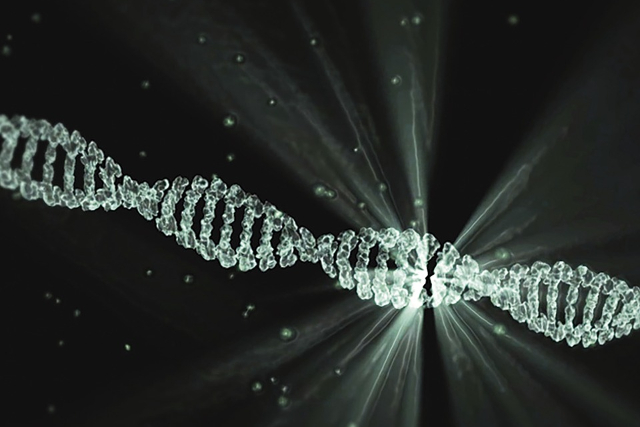
In the age of genealogy, where a simple DNA test can reveal links to distant ancestors, it’s fascinating to think about how deep our genetic history goes. While most people use DNA testing to trace their roots to different parts of the world, sometimes the connections are much closer to home.
One of the most intriguing discoveries in the world of ancient genetics is the Cheddar Man, a 9,000-year-old skeleton found in a cave near the town of Cheddar in England back in 1903. These remains are the most complete ever found of a Homo sapiens from that time. In 1997, DNA testing revealed something incredible: Cheddar Man’s DNA was linked to a man who lived just a half-mile away.
This modern-day man, Adrian Targett, a British teacher, was shocked to learn that he was the closest living relative of this ancient ancestor. Cheddar Man, who met a violent end centuries ago, was part of Adrian’s family tree. While the connection might not offer any major practical advantages, it’s an interesting reminder that some families have stayed remarkably rooted in their regions, with Adrian’s ancestors never straying too far from the land where Cheddar Man once walked.
1. Scans Revealed a Skeleton Inside a Buddha Statue
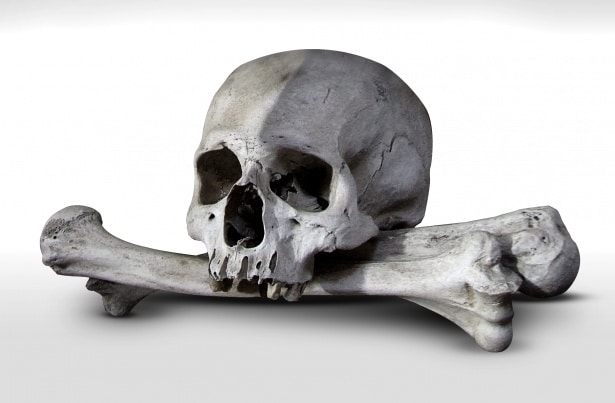
Buddhism is often associated with peace, calm, and spiritual growth, emphasizing meditation and moral living. However, some of its practices, especially in the past, might seem unusual or unsettling to those unfamiliar with the deeper aspects of the faith. One such example comes from a 1,000-year-old Buddha statue that contained a surprising secret: a mummified monk inside.
In 2015, a Dutch collector purchased the statue and began a restoration process, during which CT scans revealed the unexpected find—skeleton remains encased within the statue. Further investigation uncovered papers inside, which identified the mummified remains as those of a monk named Liuquan.
Liuquan is believed to have undergone a rare and intense practice known as self-mummification, where the monk intentionally poisoned himself by drinking a toxic tea that made his body too harmful for insects to consume. Over time, he essentially starved and preserved his body in the process, preparing for death so that his organs could be removed and his body properly preserved. After his passing, his mummified remains were placed inside the Buddha statue, where they remained for centuries.










